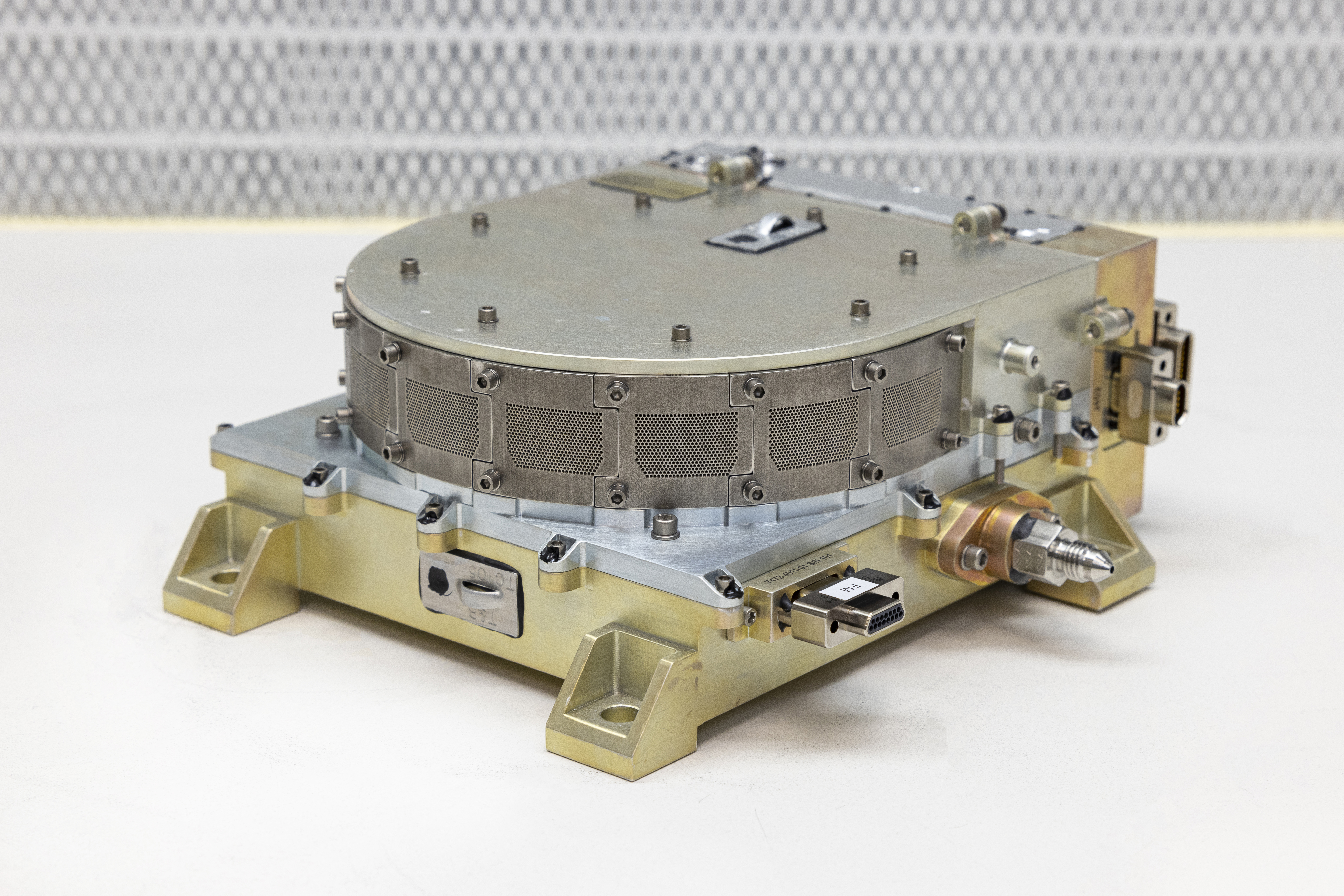Three. Two. One. Liftoff!
In just a few days, the European Space Agency’s Jupiter Icy Moons Explorer, or JUICE, mission will set off from French Guiana for its eight-year journey to the solar system’s largest planet. Scheduled for launch on April 13, JUICE will explore Jupiter’s three large ocean-bearing moons, Ganymede, Callisto and Europa, for at least three years, characterizing them as both planetary objects and possible habitats for life. But it’s not just going to be about the moons. JUICE will also closely examine Jupiter’s complex (and deadly) environment and study the wider Jovian system as an archetype for gas giants across the universe.
To do all that, JUICE needed some hefty gear. A lot of it.
A total of 10 sophisticated instruments sit bolted to the spacecraft, from sensitive cameras and imagers to a laser, magnetometer and radar sounder. Engineers and scientists at the Johns Hopkins Applied Physics Laboratory (APL) in Laurel, Maryland, designed and manufactured two of those instruments, both part of the mission’s Particle Environment Package (PEP) suite: the Jovian Energetic Neutrals and Ions (JENI) and the Jovian Energetic Electrons (JoEE) instruments. Together, JENI and JoEE are going to help answer some fundamental questions about the Jovian system.
Here’s how:
JENI can see what you and I never can

Somewhat resembling a flared-out golden hand fan, JENI’s bedazzled looks mirror its sophisticated capability: JENI is both an ion spectrometer and energetic neutral atom (ENA) imager, a type of camera that captures images using atoms instead of light.
Advancing a technique that APL pioneered and used at Saturn and Earth, the instrument will be able to image invisible space phenomena happening around Jupiter, including the vast invisible cloud of plasma and gas surrounding the gas giant and, of particular interest, the trail of gas left behind the moon Europa.
Researchers suspect particles bombarding Europa’s surface and perhaps even recently detected water plumes create the enormous gas cloud trailing behind Europa as it orbits Jupiter, but its origin and appearance remain mysterious. JENI will finally capture up-close, detailed views of this gas cloud as well as explore how the vast regions of plasma in Jupiter’s magnetosphere are heated nearly to 2 million degrees F (more than 1 million degrees C) — temperatures exceeding those of the Sun’s corona.
JoEE can “see” many ways at once

JoEE doesn’t have quite the charm that JENI does. In fact, it looks more like a large, metal hockey puck. But don’t be deceived. While unspectacular in color, this multidirectional spectrometer can do something remarkable: capture electrons traveling from nine different directions at nearly the same time.
Why does that matter?
Well, Jupiter’s magnetosphere is something to behold (and respect). Not only is it enormous — stretching out nearly to the orbit of Saturn — but it can propel electrons close to the speed of light, creating the fiercest radiation environment in the solar system. But nobody’s certain how that propulsion happens.
JoEE’s going to help. It will take high-resolution measurements of electrons coming from many directions specifically around Jupiter’s icy moon Ganymede — the only moon in the solar system known to have its own magnetic field. By doing so, JoEE can study Ganymede’s magnetosphere in enough detail to uncover the missing link needed to understand how Jupiter accelerates electrons to such speeds.
What’s more, JoEE will also be able to help researchers understand the interior structure of Ganymede’s subsurface ocean by pinpointing the location of the moon’s auroras and observing how they rock back and forth in Jupiter’s magnetic field.
And then there are small specially designed plates for collecting electrons

JoEE’s secret juice (pun intended) that makes it able to perform with such precision are nine little metal plates stretched across its front panel. Each was developed using an additive manufacturing technique pioneered by APL engineers.
Additive manufacturing — including 3D printing — has made major headway in the space industry. Bolts, tools, satellites, engine combustion chambers, whole rockets, even food have made it onto the list of materials engineers are developing for space using 3D-printing technology.
JUICE will be no exception. Exactly 518 holes — each just a hair’s width apart and angled ever so slightly — pepper the face of each stainless steel quarter-sized plate. These little plates, called collimators, are curved to match a magnetic field that will align electrons coming into the instrument.
Getting that curve (and the many angled holes piercing it) required additive manufacturing. Engineers found it impossible to manufacture the parts using traditional methods, but additive manufacturing allowed them to construct such small structures with complex features easily. In collaboration with NASA’s Marshall Space Flight Center, the team set a new standard for APL to use additive manufacturing for space instruments and created an innovative process projected to revolutionize what is mechanically possible in space.
JUICE is scheduled for liftoff on Thursday, April 13, at 8:35 a.m. EDT; visit the European Space Agency website for links and info on how to watch it live. Learn more about JoEE, JENI and the JUICE mission by visiting https://civspace.jhuapl.edu/destinations/instruments/joeejeni.
Related Topics
For Media Inquiries
For all media inquiries, including permission to use images or video in our gallery, please contact:
Michael Buckley
All Media Resources

